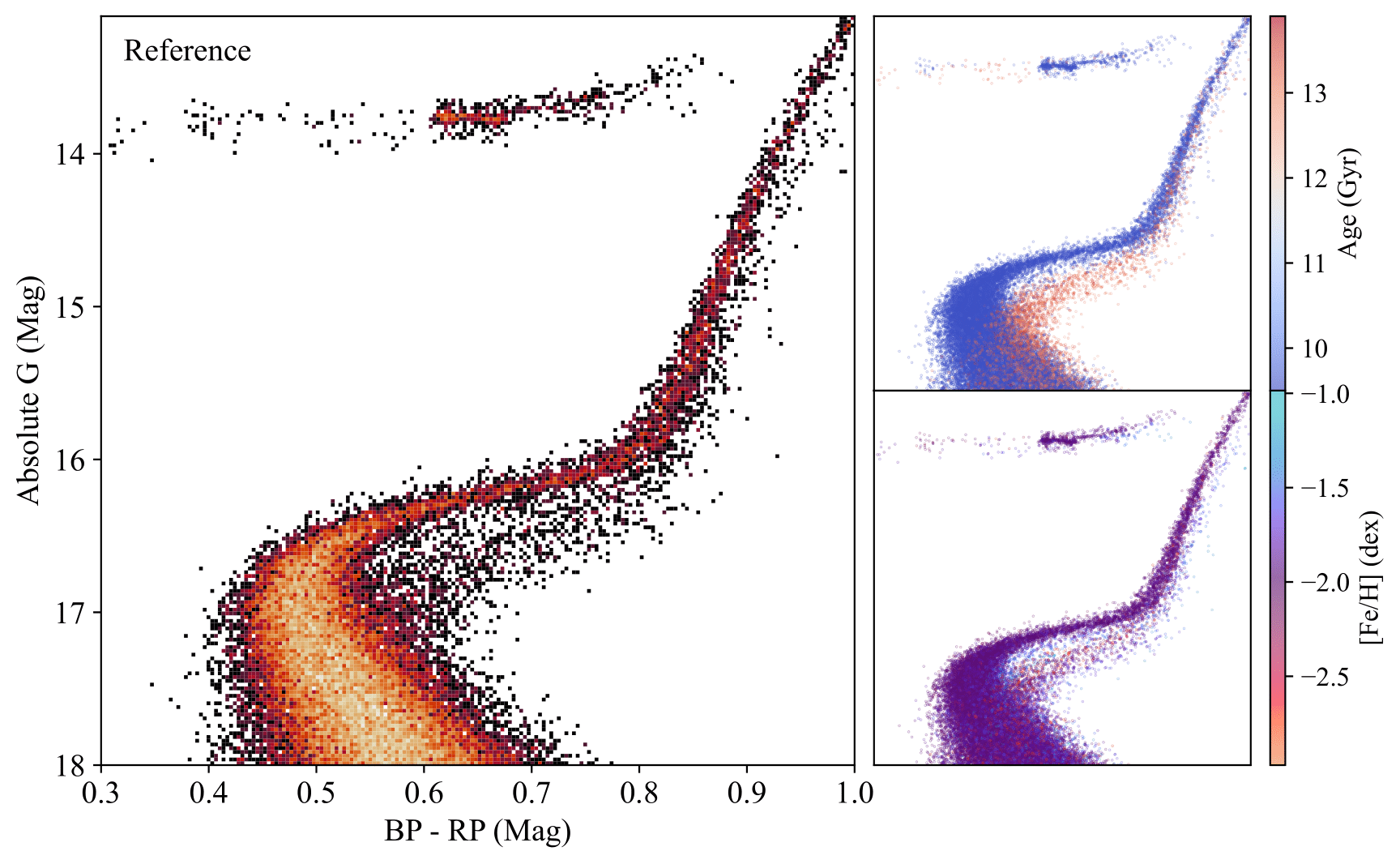Since the publication of the original EDGE suite in 2020, computational advancements have made it possible to improve the fidelity of the EDGE simulations. Consequently, the physics prescription of the second generation of EDGE simulations has undergone incremental improvements in various areas.Changes between suites are shown below; however, for a comprehensive overview, we encourage the reader to read the relevant introductory paper.
EDGE
Engineering Dwarfs at Galaxy Formation's Edge
EDGE Physics
| EDGE-1 | EDGE-2 | |
|---|---|---|
| Introduction Paper | Agertz et al 2020 | Rey et al 2025 |
| Code Base | Teyssier 2002RAMSES | Rosdahl et al 2013RAMSES-RT |
| Cosmology | Planck Collaboration et al 2014LCDM | Planck Collaboration et al 2020LCDM |
| Resolution(DM/Gas/Stellar) | 118M⊙/3pc/300M⊙ | 944M⊙/3pc/300M⊙ |
| Box Size | 50 Mpc | 100 Mpc |
| Halo Mass Range (M⊙) | 1.2×109 - 7.5×109 | 1.2×109 - 1.1×1010 |
| Stellar Mass Range (M⊙) | 4.5×104 - 1.1×107 | 1.5×104 - 4.2×107 |
| UVB Background | A Modified version ofHaardt & Madau 1996 | Faucher-Giguère 2020 |
| Stellar Feedback | CCSNe, SNe-Ia, fast winds from massive stars, and slow winds from AGB stars | CCSNe, SNe-Ia, fast winds from massive stars, slow winds from AGB stars, and radiative feedback |
| Type-Ia Supernova Model | Raiteri et al 1996Yields from:Thielemann et al 1986 | Maoz et al 2012Yields from:Seitenzahl et al 2013 |
| Yields | Woosley & Heger 2007 | NUGrid Yields:Pignatari et al 2016Ritter et al 2018 |
| Tracked Elements | Fe, O | C, N, O, Mg, Al, Si, Fe, Eu |
| Initial Mass Function | Chabrier 2003 | Kroupa 2001 |
| Initial Conditions | GenetICStopyra et al 2021a | GenetICStopyra et al 2021a |
| Cooling | Equilibrium coolingCourty & Alimi 2004 | Non-equilibrium primordial and molecular chemistryRosdahl et al 2013Nickerson et al 2018 |
| GenetICally ModifiedInitial Conditions | Early/LateHigher Final Mass | Early/LateHigher Final Mass |
| Fully Cosmological | ||
| Radiative Transfer | As implemented inAgertz et al 2020 | |
| High Cadence Tracer Particles | Cadiou et al 2019 | |
| Population III Stars |
The Science

Aliquam diam consequat
Eget mattis at, laoreet vel amet sed velit aliquam diam ante, dolor aliquet sit amet vulputate mattis amet laoreet lorem.

EDGE: A New Model for Nuclear Star Cluster Formation in Dwarf Galaxies
In this paper, we investigate the formation of simulated dwarf galaxies that play host Nulear Star Clsters, additionally we study their observational properties, and compare them to observed Globular Clusters such as Omega-Centuri.

Mattis tempus lorem
Eget mattis at, laoreet vel amet sed velit aliquam diam ante, dolor aliquet sit amet vulputate mattis amet laoreet lorem.

